With yesterday’s rout, the “bears” gained control of the narrative as the market failed at resistance.
In this past weekend’s newsletter, we discussed the market reclaiming the 100-dma on Friday. To wit:
“It is worth noting there are two primary support levels for the S&P. The previous July lows (red dashed line) and the 200-dma. Therefore, any meaningful decline occurring in October will most likely be an excellent buying opportunity particularly when the MACD buy signal gets triggered.
The rally back above the 100-dma on Friday was strong and sets up a retest of the 50-dma. If the market can cross that barrier, we will trigger the seasonal MACD buy signal suggesting the bull market remains intact for now.“
Chart updated through Monday’s close.
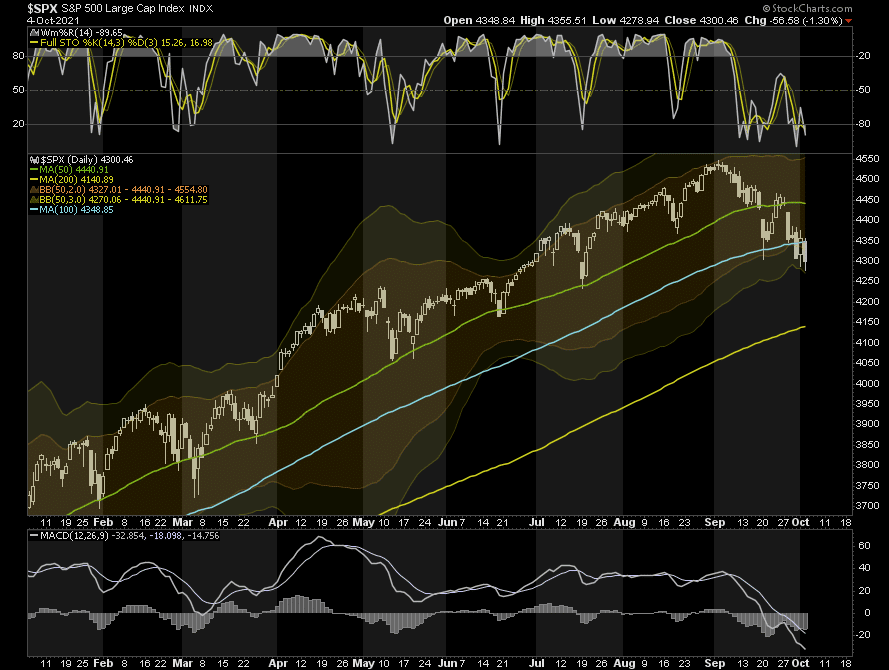
The failure to hold the 100-dma is concerning. With the “bears” continuing to maintain control over the market, risks are mounting. With the market pushing well into 2-standard deviations below the 50-dma, we expect a counter-trend rally.
However, for now, those rallies should likely get used to “sell into,” rather than trying to “buy the dip.”

Numerous Headwinds To The Bullish Outlook
The selloff in September took our short-term indicators into oversold territory. Such suggests selling pressure is getting exhausted near term.
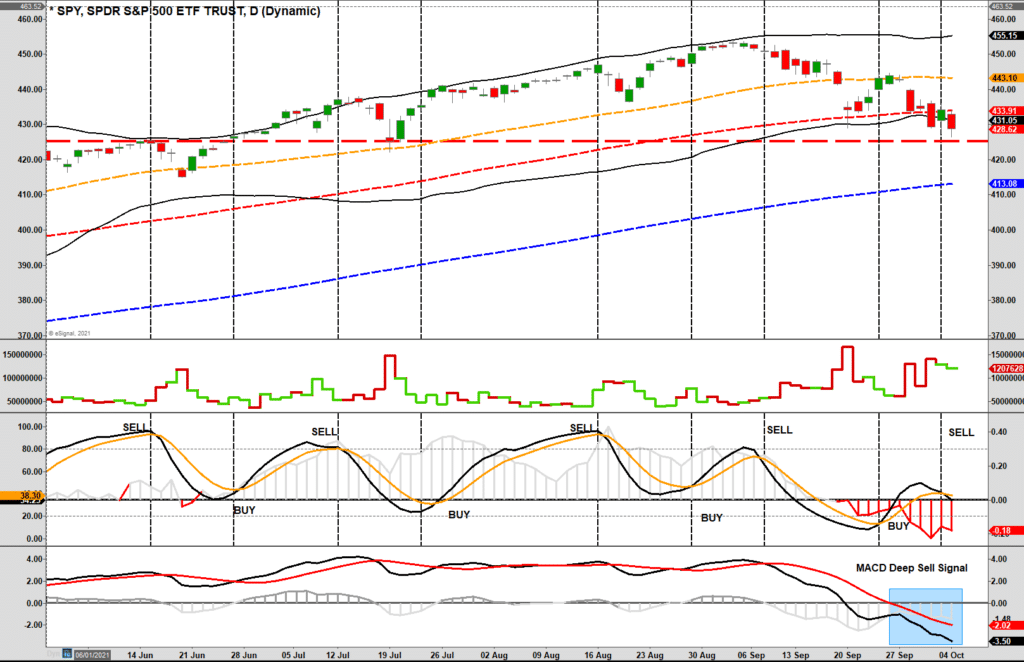
While short-term indicators got oversold, longer-term indicators did not. The dichotomy of these different indicators supports the idea of a rally short-term (days to a couple of weeks) but a more significant correction ahead.
On RIAPRO (Free 30-day trial), we provide the sentiment and technical measures we follow. The number of oversold stocks is back towards extremes, which supports the idea of a short-term rally.
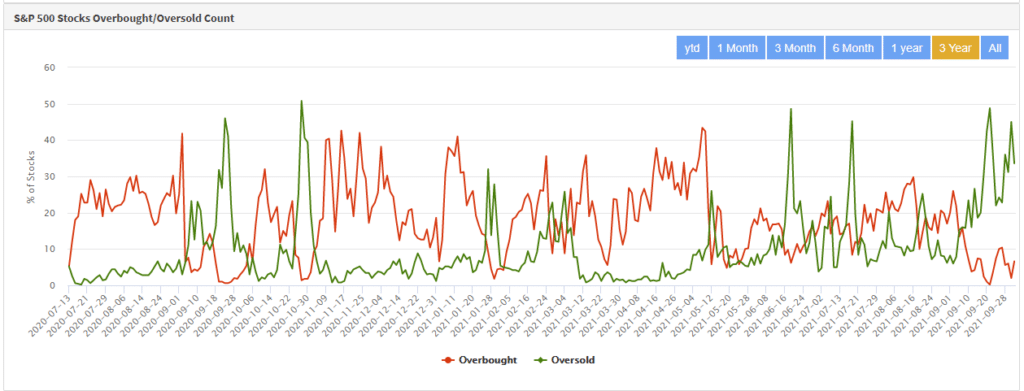
However, the overall “breadth” and “participation” of the market remains highly bearish. Thus, to avoid a deeper correction, breadth must improve.
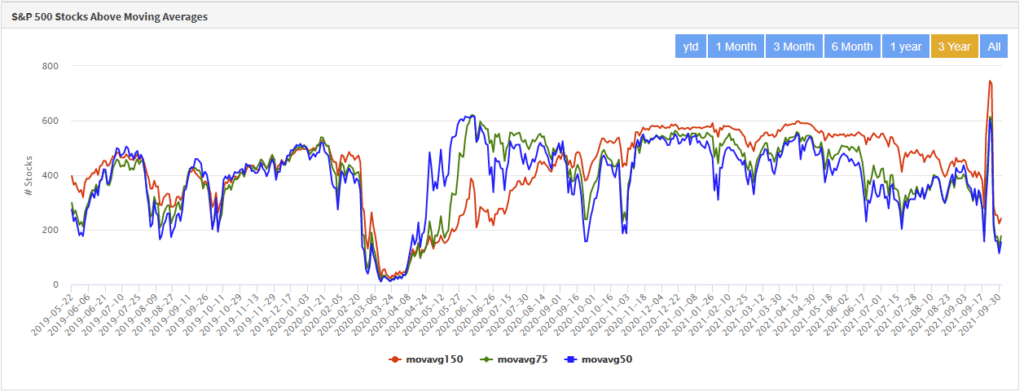
There are reasons to be hopeful for a short-term rally with markets oversold, and the sentiment very negative. Furthermore, we are entering into the “seasonally strong” period of the year. The month of October has a spotty record, but November and December trend stronger.
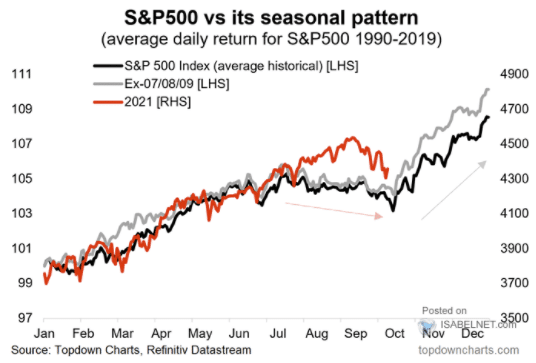
However, don’t ignore the risks. Much like a patient with a weak immune system, the weak market internals leave investors at risk of numerous headwinds.
- Valuations remain elevated.
- Inflation is proving to be sticker than expected.
- The Fed will likely move forward with “tapering” their balance sheet purchases in November.
- Economic growth continues to wane.
- Corporate profit margins will shrink due to inflationary pressures.
- Earnings estimates will get downwardly revised keeping valuations elevated.
- Liquidity continues to contract on a global scale
- Consumer confidence continues to slide.
While none of these independently suggest a significant correction is imminent, they will make justifying valuations difficult. Moreover, with market liquidity already very thin, a reversal in market confidence could lead to a more significant decline than currently expected.

Longer-Term Signals Suggest Caution
Given the broader macro issues facing the market and not dismissing the possibility of a near-term reflexive rally, the weekly and monthly signals suggest caution.
Important Note: Weekly and monthly signals are only valid at the end of the period.
On a weekly basis, the market has triggered sell signals for the first time since April. However, despite the sell signal, the market continues to hold above its weekly moving average support. Furthermore, the market is as oversold today as it was during the selloff earlier this year.
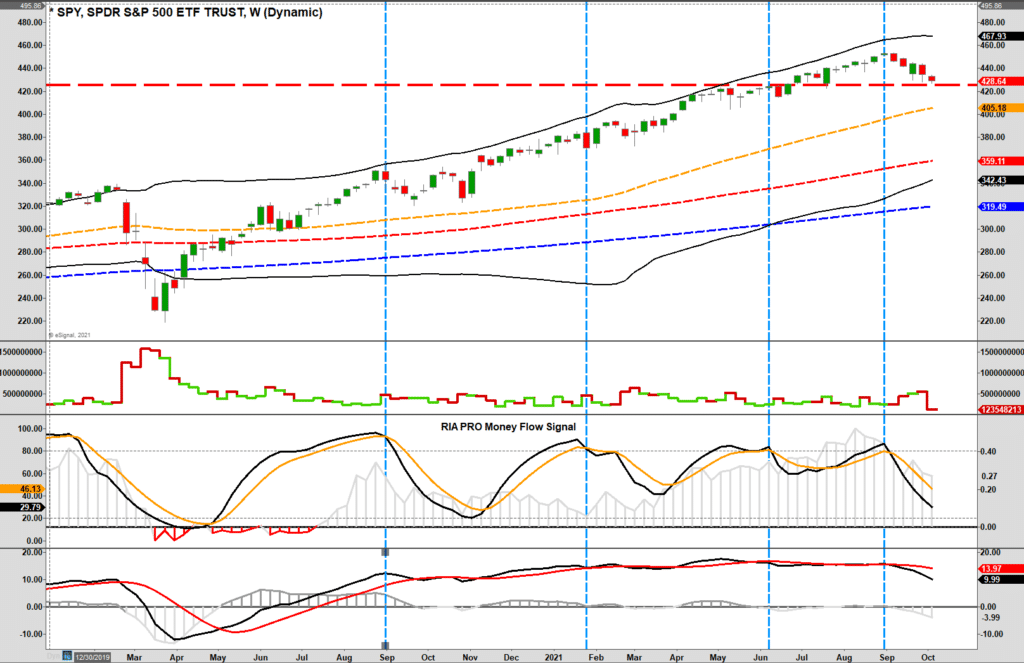
The monthly picture is more concerning. Monthly “sell signals” are rarer and tend to align with more extensive market corrections and bear markets. But, as shown below, it is the first time since March 2020 that this signal has gotten triggered.
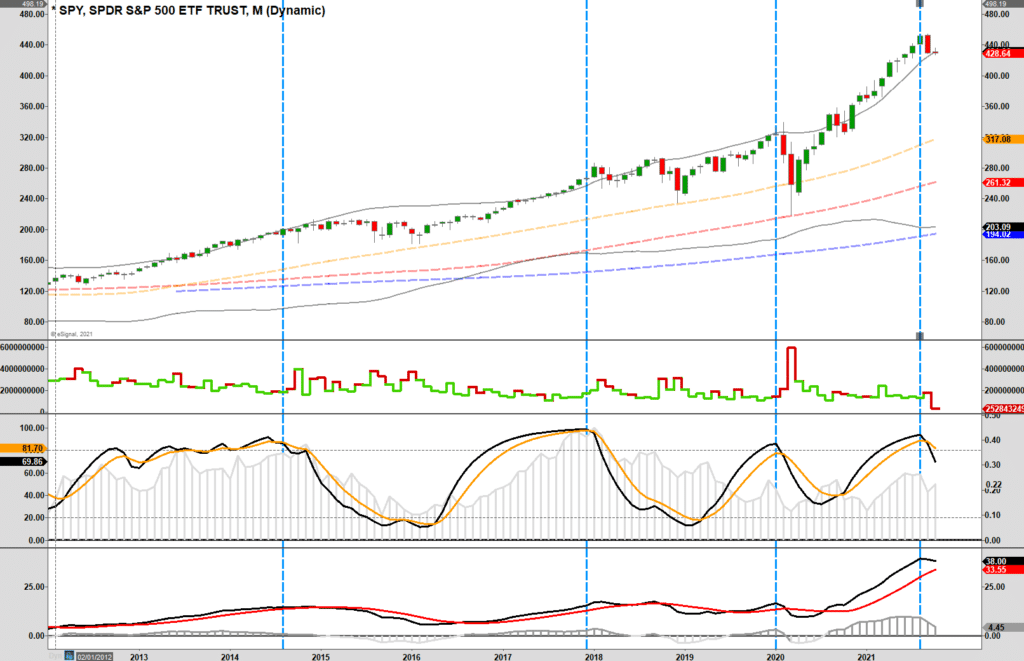
While the longer-term MACD has not yet confirmed that monthly signal, it is worth paying close attention to. Historically, the monthly signals have proven useful in navigating correction periods and bear markets.
Let me reiterate these longer-term signals do not negate the possibility of a counter-trend bull rally. As noted, in the short-term the market is oversold enough for such to occur. However, these longer-term signals suggest that investors should be using such rallies to rebalance portfolio risks, raising some cash, adding hedges, and reducing overall portfolio volatility.
My best guess is that we are still in midst of seasonal weakness and could decline a bit further before sellers get exhausted. Such should lead to a stronger rally into the end of the year, however, new highs may be in the rearview mirror for now.

15-Portfolio Management Rules
There is a substantial risk of a bigger correction as we move into 2022. Such does not imply selling everything and moving to cash. However, being aware of the possibility allows for a logical approach to risk management.
- Cut losers short and let winner’s run.
- Set goals and be actionable.
- Emotionally driven decisions void the investment process.
- Follow the trend.
- Never let a “trading opportunity” turn into a long-term investment.
- An investment discipline does not work if it is not applied.
- “Losing money” is part of the investment process.
- The odds of success improve significantly when the technical price action confirms the fundamental analysis.
- Never, under any circumstances, add to a losing position.
- Market are either “bullish” or “bearish.” During a “bull market” be only long or neutral. During a “bear market”be only neutral or short.
- When markets are trading at, or near, extremes do the opposite of the “herd.”
- Do more of what works and less of what doesn’t.
- “Buy” and “Sell” signals are only useful if they get implemented.
- Strive to be a .700 “at bat” player. (No strategy works 100% of the time.)
- Manage risk and volatility.
For now, it appears the “bears” have regained control of the market. However, the bullish trend remains intact which suggests we remain long our equity exposure. When there is a dichotomy of conditions, sometimes the best action is “no action” at all.
The “need to do something” is emotionally driven and tends to lead to worse outcomes.
For now, please pay attention, make small changes as needed, reduce risk on rallies, and wait for the market to tell you where its headed next.
Things are getting interesting.
Lance Roberts is a Chief Portfolio Strategist/Economist for RIA Advisors. He is also the host of “The Lance Roberts Podcast” and Chief Editor of the “Real Investment Advice” website and author of “Real Investment Daily” blog and “Real Investment Report“. Follow Lance on Facebook, Twitter, Linked-In and YouTube
Customer Relationship Summary (Form CRS)
Also Read



















